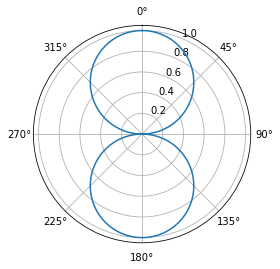How can I make a clockwise polar plot? Somebody ask a similar question here: How to make the angles in a matplotlib polar plot go clockwise with 0° at the top?, But I don't understand this:
import matplotlib.pyplot as plt
import numpy as np
fig = plt.figure()
ax = fig.add_subplot(111, polar=True)
ax.grid(True)
theta = np.arange(0,370,10)
theta = [i*np.pi/180.0 for i in theta] # convert to radians
x = [3.00001,3,3,3,3,3,3,3,3,3,3,3,3,3,2.5,2,2,2,2,2,1.5,1.5,1,1.5,2,2,2.5,2.5,3,3,3,3,3,3,3,3,3]
ax.plot(theta, x)
plt.show()
EDIT:
import matplotlib.pyplot as plt
import numpy as np
from matplotlib.projections import PolarAxes, register_projection
from matplotlib.transforms import Affine2D, Bbox, IdentityTransform
class NorthPolarAxes(PolarAxes):
'''
A variant of PolarAxes where theta starts pointing north and goes
clockwise.
'''
name = 'northpolar'
class NorthPolarTransform(PolarAxes.PolarTransform):
def transform(self, tr):
xy = np.zeros(tr.shape, np.float_)
t = tr[:, 0:1]
r = tr[:, 1:2]
x = xy[:, 0:1]
y = xy[:, 1:2]
x[:] = r * np.sin(t)
y[:] = r * np.cos(t)
return xy
transform_non_affine = transform
def inverted(self):
return NorthPolarAxes.InvertedNorthPolarTransform()
class InvertedNorthPolarTransform(PolarAxes.InvertedPolarTransform):
def transform(self, xy):
x = xy[:, 0:1]
y = xy[:, 1:]
r = np.sqrt(x*x + y*y)
fig = plt.figure()
register_projection(NorthPolarAxes)
ax=plt.subplot(1, 1, 1, projection='northpolar')
theta=np.linspace(0,2*np.pi,37)
x = [3.00001,3,3,3,3,3,3,3,3,3,3,3,3,3,2.5,2,2,2,2,
2,1.5,1.5,1,1.5,2,2,2.5,2.5,3,3,3,3,3,3,3,3,3]
ax.plot(theta, x)
plt.show()
How to use register_projection(NorthPolarAxes) correctly?


